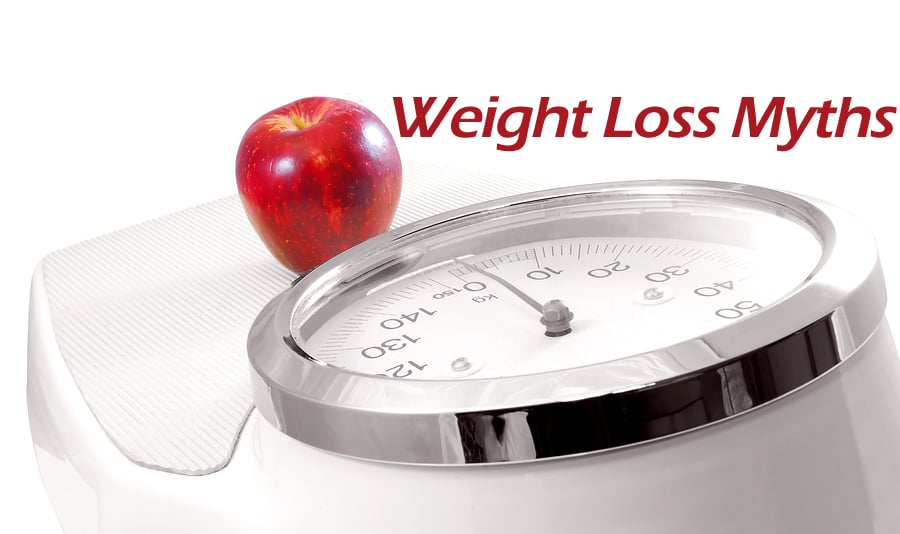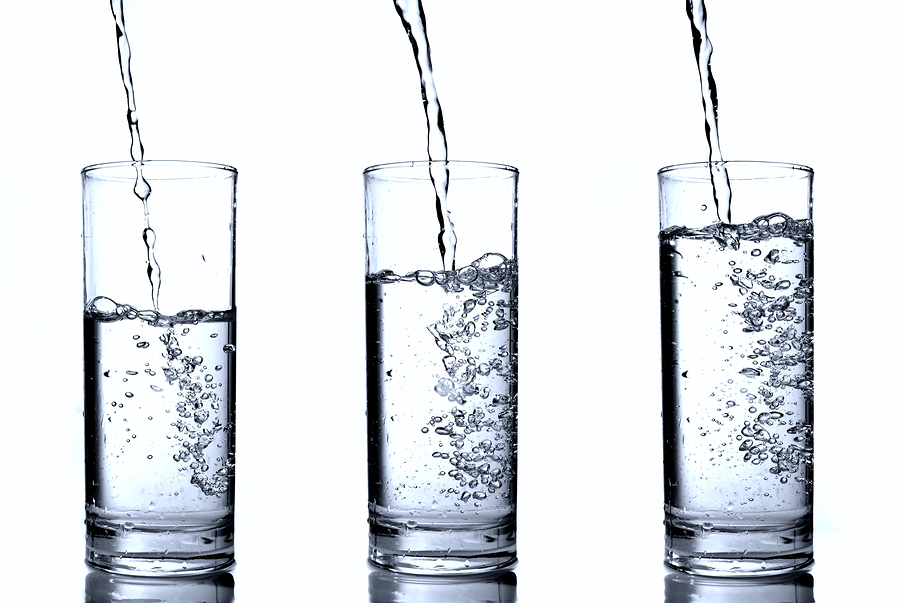7 Ways to Boost Your Metabolism
By Elizabeth Miller on February 01, 2019
Score a Weight Loss Win on a Snow Day
By Elizabeth Miller on January 28, 2016
If you are reading this while snowed in – congratulations! You get a day off of work! A day stuck in the house can be lots of fun and/or relaxing, but it can also wreck your diet. Here are 9 DOs to help you NOT gain weight today, and 2 DON’Ts.
No More Resolutions
By Elizabeth Miller on January 06, 2016
Every January millions of people across the globe decide to mentally beat themselves up over things they did, said or ate the previous year. This form of ritual masochism is more commonly known as making a New Year’s Resolution. And no…just because I’m making fun of it does NOT mean that I’ve been above it all these years. I’ve done the “exercise more” resolution…the “eat less” resolution…the “lose weight” resolution. Heck, I’ve even done the “no more resolutions, resolution.” This year, though, I’m officially done. I’m taking a cue from an old friend from college and picking a single word for the year. “My” word for the year. This process is based on My One Word (http://myoneword.org/), but I went a slightly different path. I chose one on my own – from my heart. My word this year is “better.” It’s not perfect. It’s not great. It’s not even good. It’s better. I want to be a better wife…a better daughter…a better person. I want do better with my eating habits…better with getting more exercise. That feels – well – BETTER to me than a scary resolution that I’m likely to break within the first week of the year. Less guilt involved. I just want to do better this year, and that’s all any of us can really do. So instead of beating yourself up this year over how much you ate during the holidays and VOWING to eat only salads and fish, how about picking a single word to encompass what you want to accomplish this year. Believe me – WAY better than a resolution.
3 Ways to Keep your Fitness Goals in Check on Summer Vacation
By Elizabeth Miller on July 09, 2015
I Shouldn't Have Eaten That
By Elizabeth Miller on June 12, 2015
10 Ways Pets Keep Us Healthy
By Elizabeth Miller on April 03, 2015
Without a doubt, we love our pets. It's estimated that Americans will spend over $60 billion dollars on our furry friends this year; that's an average of about $500 per family. The great news is that it's money well spent; besides being our best friends, pets are a great boost to our overall health. Here are 10 ways our pets help us every day.
- Happiness. Anyone who's ever owned a dog can tell you, they're absolutely thrilled when you walk through the door. It doesn't matter if it's been 8 hours or 8 minutes, they practically wiggle themselves off their feet wagging their tails so hard. That kind of love makes us happy...it makes us smile...which is always good for you mentally and physically. The physical effects from that love include lowered cortisol and raised seratonin levels.
- Lowered Blood Pressure. As odd as it may sound, the simple act of petting your furbaby can result in a drop in blood pressure. Researchers have found that the effects aren't just temporary; pet ownership has longer lasting effects on your cardiovascular health.
- Healthy Heart. Studies have shown that dog and cat owners have a lower risk of dying from cardiac disease – including heart failure - than non-pet owners.
- Friend Magnets. It's almost impossible for a dog lover to pass up the opportunity to speak with someone walking a dog. They're just furry little magnets for conversation, and make it much easier to meet new people.
- Mental Health Boost. Many organizations now recognize the benefits of service animals for more than just physical disabilities. Therapists have been known to actually prescribe a pet as a way of dealing with depression, and some retirement and nursing facilities have pet visitation days for their patients. Some organizations specifically deal with military veterans. Paws and Stripes, for example, is a non-profit organization providing service dogs for wounded military veterans with post-traumatic stress disorder and traumatic brain injury.
- Exercise. Most dog owners will tell you that it's almost impossible not to get at least a little exercise every day. Just two 15-minute walks a day will get in your recommended 30 minutes of exercise without even trying hard.
- Fewer Allergies & Better Immune System. If your little one is begging for a pet, it may not be a bad idea to give in. Children raised on farms or in homes with a cat or dog, have higher level of certain immune system chemicals. That makes them less likely to get sick as children or as adults. Researchers have also found that they're also less likely to develop allergy problems.
- Children With Autism. New research finds autistic children who have a pet at home have much more advanced social skills and are more assertive and communicative than autistic children who do not have an animal companion.
- Assistance for the Disabled. The role of service dogs has greatly expanded in recent years beyond only guide dogs for the blind. There are now trained seizure dogs who can either lie down on the patient to prevent injury or are trained to fetch help for children sometimes before the seizure even starts. There are also dogs trained to sense cardiac issues and low blood sugar as well as those who turn on lights, open doors and pick up small items from the floor.
- Chronic Pain. Petting your four-legged family member also helps release endorphins, which can be powerful pain relievers. Caring for your pet also helps distract you from chronic pain.
Spring is Here: Get Out and Get Fit
By Katie on March 30, 2015
The sun is out and it’s a beautiful day. Ditch the gym, the treadmill, or the elliptical! Instead burn calories with fun outdoor activities. With bathing suit season inching closer and closer, now is the time to enjoy the changing seasons and get your body toned. Many common outdoor activities can help you to burn calories.
Remember, the rule of thumb for weight loss is reducing 3,500 calories equals a loss of one pound. Therefore, if you can burn 500 calories a day while maintaining your normal diet, you can loose one pound a week. Here are a few outdoor activities that can help you on your way. Calorie counts are based on a 150-pound woman.
Planting seeds, shrubs, and trees to freshen your gardens and get your yards looking great burns 300 calories in one hour of work.
Frisbee is a great outdoor activity that is fun and gets your heart rate up. A causal game of Frisbee with the kids or neighbors while you barbeque burns 200 calories in one hour of play.
Weeding the gardens you have planted also helps with your weight loss goals. One hour of pulling weeds totals 300 calories burned.
Biking is a fun and relaxing way to get out and exercise. One hour of riding a bike burns a little more than 400 calories.
Golf is not for the faint of heart, but those of us who love the peaceful yet challenging sport can burn 400 calories in one hour on the course.
Hiking around a beautiful lake or up a mountain to take in the sights is another great outdoor activity. Hiking for one hour burns 370 calories.
Canoeing is a spring and summer favorite for outdoor enthusiasts. Rowing your boat for one hour can burn up to 850 calories.
Tennis is great for getting fit in the warm months of the year. Grab a friend and hit the courts for one hour; you’ll burn nearly 300 calories in just thirty minutes.
Most all of us are ready to get out and soak up the warm sun. Enjoy some of these calorie-burning activities, while you reap all the benefits of exercise and get your daily dose of Vitamin D.
How To Cheat On Your Diet
By Elizabeth Miller on February 25, 2015
Is it possible to cheat on your diet and still see healthy results? Not only is it possible, but some experts think it’s necessary. If you’re on a severely restrictive diet, all you tend to think about is food – whatever your favorite food is. You may dream of ice cream, swoon over pizza or crave a burger; and if you let your desires get out of hand you might find yourself binging on everything in sight. Take care of the issue before you give up on your healthy eating completely.
Some people even think it’s best to satisfy that craving with a similar food. So if you’re craving ice cream, you have a bowl of frozen yogurt – even though you don’t particularly like frozen yogurt. That means it’s okay while you’re eating it…it’s cold…kind of creamy…it’s okay, but it’s just not ice cream. That means when you finish – you guessed it - you still want ice cream. Your best bet is to just eat a small portion of really good, high quality ice cream once in a while. Notice I didn’t say every day…once in a while. And, be sure to watch your caloric intake a few days before and after. (One splurge at a time, please.) The key is to satisfy the craving…the actual craving…then move on. You weren’t craving yogurt; you were craving ice cream.
One other thing to remember is to watch your portion sizes – always. Whether you’re eating a salad or a brownie, portion size matters. Permission to splurge on occasion doesn’t give you permission to eat an entire large, delivery pizza by yourself or a gallon of ice cream, for that matter. One scoop of ice cream or 2 pieces of pizza or a small order of fries…that’s a splurge. Enjoy it…savor it…then get back to normal, healthy eating. Your body will thank you for it.
7 Weight Loss Myths
By Elizabeth Miller on February 20, 2015
Some weight loss myths persist even though they've been proven wrong time and time again. We've included seven that you can stop worrying about.
- Lose belly fat by doing sit ups. Wrong. Exercise strengthens muscles and is good for you, but trying to “spot reduce” belly fat with sit ups just doesn't work. To get rid of belly fat you need to engage in cardiovascular or aerobic exercise. You’re going to have to burn calories throughout your body to reduce your midsection through exercise.
- Avoid all fat. Wrong. Yes, animal fat and other saturated fats have been linked to health issues like heart disease, however let’s not throw the baby out with the bathwater. Monounsaturated fats like olive oil, canola oil, avocados and nuts have been shown to help lower bad cholesterol levels and more.
- Snacking causes obesity. Wrong. Okay, if you’re grabbing chips and candy bars out of the office vending machine, then yes…this would be bad for you. If, however, you’re snacking smart you’re on the right path. Eating a healthy, low-calorie snack when needed can help keep you from over-indulging at mealtime. If you’re starving now, by the time you get to dinner you may be so hungry that you make poor choices or overeat. A high protein snack like low-fat cheese or nuts can also be just the energy pick-me-up you need to finish your day.
- All carbs are bad. Wrong. Don’t lump all carbohydrates into the same white bread loaf. Whole grains, brown rice, beans and veggies provide a host of nutrients and fiber, are low in calories and can help reduce the risks of some types of diseases. Plus, the body uses carbs as fuel during exercise to burn body fat. Try to avoid processed carbs, however such as those high in sugar and white flour.
- Eating (celery, lettuce, grapefruit) will burn fat. Wrong. Foods don’t burn fat. Basically, a calorie is a calorie is a calorie – sort of. (We’re not talking about “empty” calories like those in sodas or candy…those are just a waste of space.) There are just no specific foods that increase your metabolic rate.
- Going hungry is the only way to lose weight. Wrong. Crash diets just don’t work. While you may see some results, most people gain back any weight shortly thereafter. It’s just too hard to maintain that lifestyle. You’ll be tired and hungry and eventually give in to foods that are probably high in sugar and fat.
- Foods labeled “reduced fat” are always better. Wrong. Reduced fat foods don’t have to meet specific labeling criteria. While they may contain less fat that the full fat version, that doesn't necessarily make them healthy. Many are packed with extra sugar and may have unhealthy chemicals or additives to make them taste better. Plus, they may have more calories and fat than something truly healthy like a piece of fruit or cheese.
Hydration: What You Need To Know About H2O
By Katie on December 11, 2014
We all know drinking water is important, but just how important is it? Water makes up about 60% of our body weight, so it’s absolutely vital to maintaining good health. It regulates our blood pressure and body temperature, it keeps our ears, nose, and throat moist, and our nails, skin, and hair are dependent on water to be healthy. Without enough water, we feel tired, sluggish, and can even think we are hungry when we are really just thirsty! Every body system, organ, tissue, and cell needs water to function properly. We know we need it to feel and look our best. But, how much water do we need?














